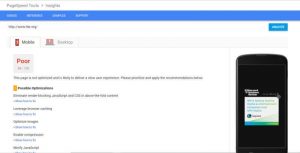— December 8, 2017

illustrade / Pixabay
When it comes to preparing career marketing materials, from resumes to LinkedIn profiles, my goal is to always ensure the reader can connect the dots and answer the decision maker’s key question: “How can he/she help me?”As the owner of one of many companies that write resumes I do this by working to understand the challenge, or the pain point, and then explaining the strategy, leadership and execution involved in solving the problem.
For instance, as a CIO, did you overhaul an outdated infrastructure or solve a company’s struggling ERP issues? As a CFO, did you work to ensure the company’s finances could support various acquisitions? My clients hired into VP, Director, SVP and C-Suite roles successfully convey to decision makers that they solved these pains and others, and that their experience ticks off these 4 boxes:
They are leaders. They have shouldered the burden for major challenges and initiatives
They think strategically. They understand the impact of their efforts beyond a specific line of business or organizational function.
They partner across business organizations. They show that their efforts did not occur in a silo, but rather are the result of collaboration with other leaders and stakeholders.
They produce results. They have tangible, measurable proof that their efforts made an impact.
I follow the 3 Executive Storytelling rules detailed below. I hope the help you as you work to tell your unique career story.
EXECUTIVE STORYTELLING RULE #1:
Tell them what they want to know, not what you think they need to know
LinkedIn profiles and resumes should always start with a summary section at the top. Don’t use this section to describe yourself with adjectives, or talk about the role you are seeking.
Instead, provide information that directly correlates to what they’ve asked for. If you’re unclear, review job postings – and you’ll find that even though the language differs slightly, the overarching themes are similar.
EXECUTIVE STORYTELLING RULE #2:
Don’t just tell them, show them . . . with examples that show value and context
In the Experience section of your resume and LinkedIn profile, it is essential that you support the points outlined in your summary section with hard-hitting examples featuring quantifiable results. In other words, elaborate.
Weak: Increased revenues
OK: Increased revenues 11%
Better: Increased revenues 11% in 18 months.
Best: “Reversed 3 years of sales decline through performance KPIs and training – increasing revenues 11% in 18 months.
See the difference? Unlike the first, this last sentence not only shows the achievement, it explains how it occurred with context and quantifiable results.
EXECUTIVE STORYTELLING RULE #3:
Format Wisely
Your resume and LinkedIn should be easily skimmable regardless of screen size – important to note given that more than half of all LinkedIn reading, and close to that when it comes to resume reading occurs via mobile device.
Formatting tips from the pros:
Consider the use of targeted color, bolding and shading to help key points to stand out.
- Keep your paragraphs to 2 or 3 lines
- Add a bit of white space by hitting the enter bar between each bullet or paragraph.
- Read your resume and LinkedIn on your phone. Or ask a friend to do the same. Can you easily discern the key points in 10-15 seconds (the latter is what you can expect when your documents are read by a referral, the former by a stranger)
CONNECTING THE DOTS
These strategies for answering their pressing concerns, showing value and context, and doing so in a well-formatted document, will help the reader connect the dots.
The outcome? There will be little room for doubt that your experience aligns perfectly with their situation and their PAIN, and you will be seen as an ideal candidate to fill their executive shoes.
Business & Finance Articles on Business 2 Community
(126)
Report Post






